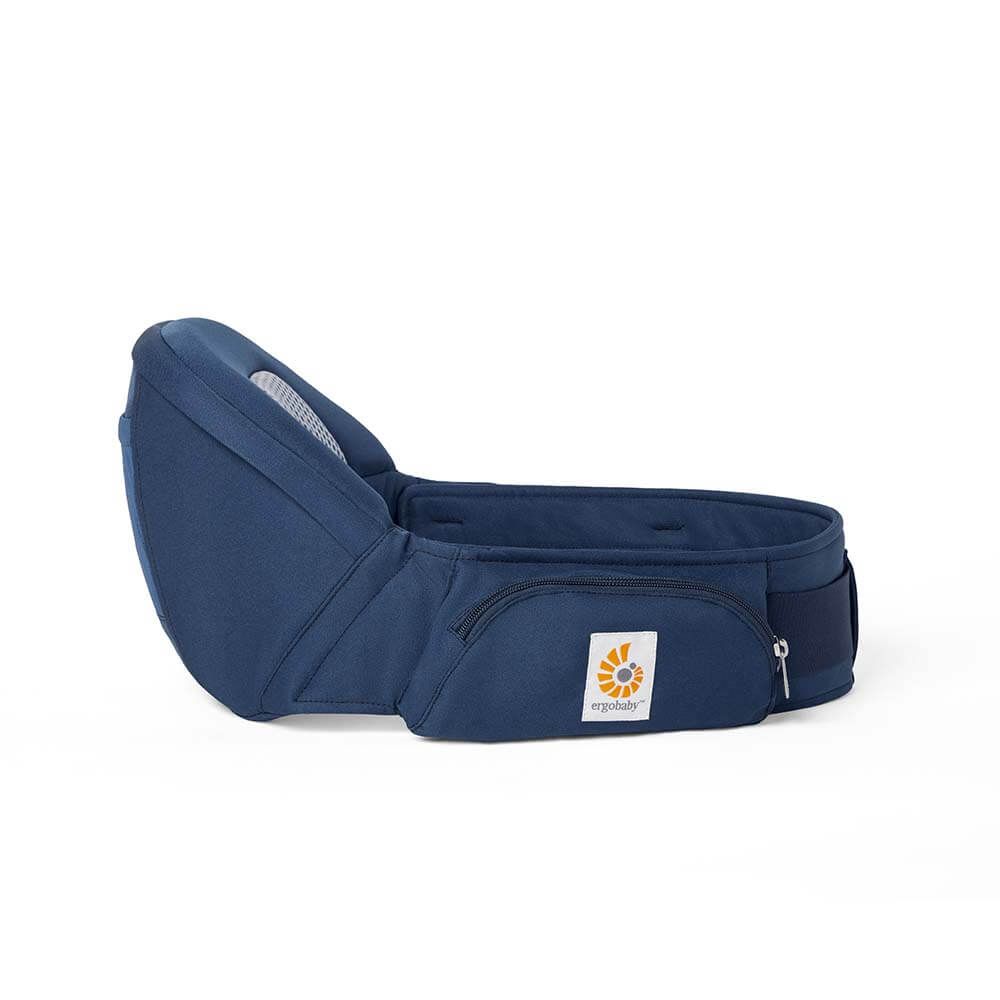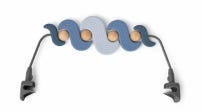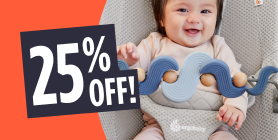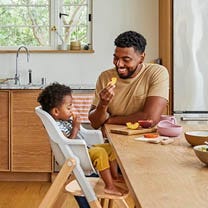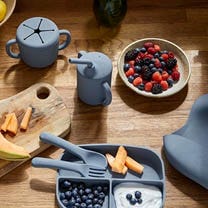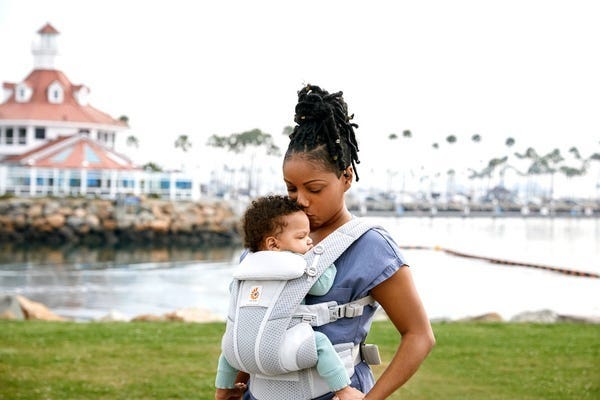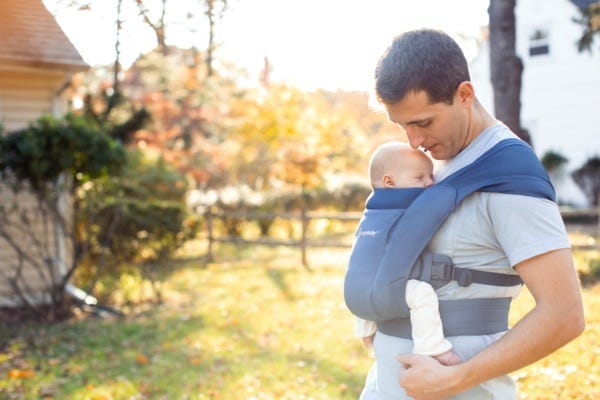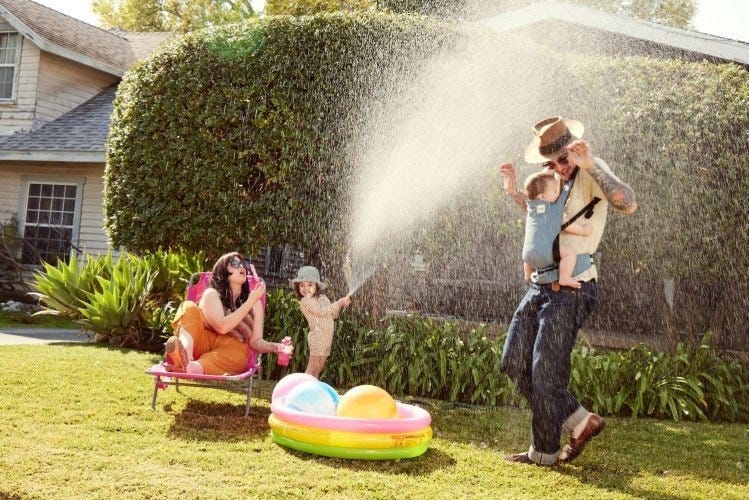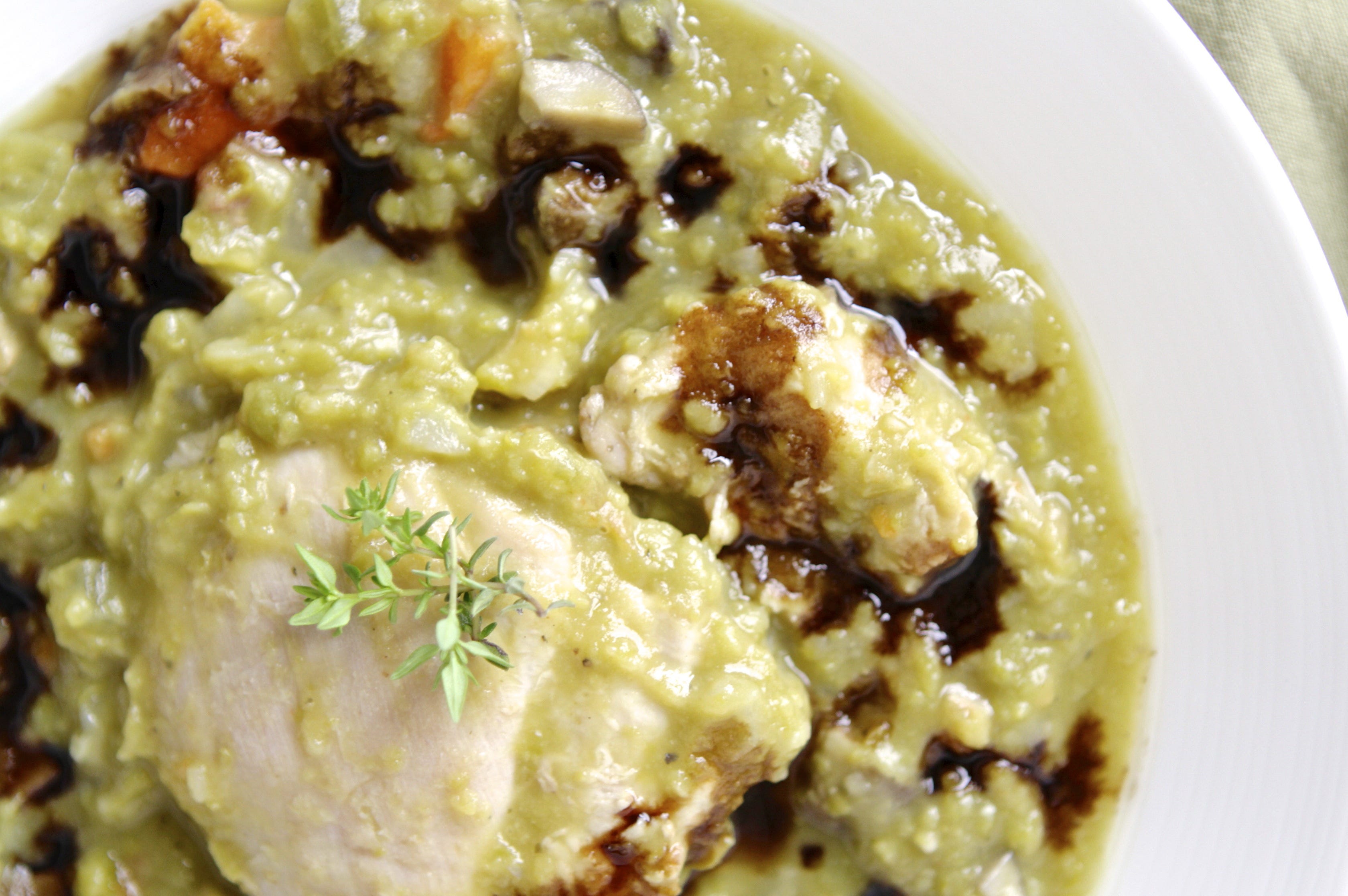
- Start before you conceive: Women that start pregnancy in good health and at a normal weight are more likely to have better outcomes. If you are thinking of becoming pregnant, try to maintain a healthy weight and eat a balanced diet. Be sure to include a folic acid supplement, which is critical for fetal development. It is optimal to begin folic acid supplements even before you become pregnant.
- Remember quality is better than quantity: It is easy to convince yourself that eating for two means that you can eat whatever you want. But, in reality, you only need a few hundred extra calories a day and a lot more nutrients than you normally do. Be sure that most of your food choices are nutrient dense and not just empty calories. For example, a half of veggie sandwich on whole wheat bread (nutrient dense) for a snack is a better choice than a donut (empty calories).
- Avoid potentially dangerous foods: Some foods have a higher risk of carrying microbes that cause food borne illness and are potentially harmful to your baby. Avoid raw or undercooked foods like eggs and meat. Don’t eat fish that could contain high levels of mercury (i.e. king mackerel, marlin, orange roughy, shark, swordfish, tilefish, and tuna) or raw seafood, like sushi or clams. Stay away from soft cheeses like brie and feta as they are generally not pasteurized.
- Eat small frequent meals: During the first part of your pregnancy, you may experience the nausea of “morning sickness” (even though it can last all day). Keeping food in your stomach with small frequent meals throughout the day will help maintain your blood sugar and decrease the effects of morning sickness. At the end of your pregnancy, your baby may be crowding your stomach, which can decrease the amount of food you can eat before feeling full. Small frequent meals can help you get the nourishment you need without feeling uncomfortable.
- Steer clear of processed and prepackaged food: These foods tend to be higher in unhealthy fats, calories, and sugars then if you cook the same meals at home. Take a little extra time to make meals at home from scratch with fresh ingredients (you also avoid eating unnecessary additives and preservatives).
- Increase your fiber: Being pregnant can cause constipation (and sometimes uncomfortable hemorrhoids). Eating foods that are high in fiber can help keep your digestive system healthy; plus it helps keep you full and has additional health benefits. Try whole grain breads and cereal and include plenty of fresh fruits and vegetables.
- Include enough calcium: Your baby needs calcium to grow healthy bones and teeth. If the baby doesn’t get enough calcium from what you consume, then she will take calcium from your bones. To prevent this, add more calcium rich foods in your diet. Dairy foods like milk, yogurt, and cheese have a lot of calcium, but so do some non-dairy foods like broccoli, spinach, and almonds.
- Reach for food rich in folic acid: Folic acid is one of the most important vitamins during pregnancy because it helps with brain and spinal cord development. Having enough folic acid is important from the very first days of pregnancy. Be sure to eat plenty of legumes (like black, pinto or garbanzo beans), green leafy vegetables, and citrus. Most cereals and grains are fortified with folic acid as well. Taking your prenatal vitamin will also ensure you get enough folic acid.
- Incorporate foods high in iron: The amount of blood in your body will increase by about 50% during pregnancy, and iron plays a large role in blood production. Your prenatal vitamin will help meet some of your iron needs (try taking it at night and with food if it makes you feel nauseous), but also eat foods high in iron like lean meats (red meat is especially high in iron), legumes, and dark green leafy vegetables like spinach. Eating a good source of vitamin C (like oranges) with these foods will help the iron be absorbed better.
- Eat enough protein: Protein is the building block of cells, so you will need plenty for your growing baby. Some good ways to get protein are by eating lean meats, like chicken breast and fish (that do not contain mercury). Other foods that are high in protein are eggs, nuts and seeds (which also contain healthy fats), and dried beans and peas.
RECIPE for Hummus ~ A flavorful dip for fresh, cut-up vegetables, or spread on sandwiches. Here is a quick and easy recipe that incorporates several of the nutrition tips: chick peas are high in folic acid, fiber, iron and protein; and tahini (sesame seed paste) is high in folic acid (and healthy fats). You might even find that your whole family likes it. Serve with whole wheat pitas and/or vegetables.
- 1 15 oz can garbanzo beans
- 3 TBS lemon juice
- ¼ cup olive oil
- ¼ cup water
- 2 TBS tahini (sesame seed paste)
- ¼ tsp salt
- 1/8 tsp cayenne pepper
Directions: Put all of the ingredients in a food processor and blend until smooth. Other great additions to blend into your hummus: olives, roasted red pepper, dill, sun dried tomatoes, a hand-full of fresh herbs. Enjoy!
Emotional Benefits of Getting Outside
Spending time in nature with your baby can strengthen the bond between you. The simple act of holding your baby close, feeling their warmth, and sharing new experiences together can create strong emotional connections. It’s also a wonderful way to reduce stress and improve your mood. When my littles were extra fussy, I’d take a walk around the neighborhood. Even though I don't live in an area with trails and surrounded by nature, simply behind outside changed everything. A little vitamin D does wonders!
Cognitive Development
Nature is a sensory wonderland for babies. The different sights, sounds, and smells can stimulate your baby’s senses and promote cognitive development. Watching leaves rustle, hearing birds chirp, and feeling the texture of a tree bark can all contribute to their learning and development.
All About Baby Carriers for Nature Adventures
Choosing the Right Baby Carrier
When it comes to selecting the best baby carrier for summer adventures, there are several options to consider.
Types of Baby Carriers:
- Wraps: Perfect for newborns, providing a snug and secure fit.
- Slings: Ideal for quick and easy use, offering good ventilation.
- Soft Structured Carriers: Versatile and comfortable for both parent and baby, suitable for longer trips.
Factors to Consider:
- Baby’s Age and Weight: Ensure the carrier is appropriate for your baby’s size and weight. For example, Ergobaby’s Embrace Newborn Carrier is perfect for the fourth trimester where baby is small and you’re looking for an easy way to stay close. As they grow, you’ll want to upgrade to an all-position carrier that’s meant for growing babies.
- Parent’s Comfort and Ergonomics: Look for carriers with padded shoulder straps and lumbar support if you’re planning on longer outings.
- Ease of Use: Choose a carrier that is easy to put on and take off.
- Climate and Breathability: Opt for carriers made of breathable fabrics to keep you and your baby cool in hot weather.
Safety Tips:
- Proper Positioning: Ensure your baby is seated correctly, with their legs in an "M" position and their head should be close enough to kiss.
- Checking for Wear and Tear: Regularly inspect your carrier for any signs of damage.
- Ensuring Adequate Support: Make sure the carrier provides proper support for your baby’s head and neck.
Exploring Nature with a Baby Carrier
Ideal Spots for a Nature Walk with Baby
- Parks and Gardens: Great for leisurely walks and picnics.
- Nature Trails and Forests: Perfect for more adventurous outings.
- Beaches and Lakesides: Wonderful for enjoying the water and sand, with the right carrier.
Activity Ideas
- Hiking: Enjoy a scenic hike with a hiking baby carrier that offers support and storage.
- Bird Watching: Use your carrier to keep your baby close while you explore and observe wildlife.
- Picnics: A carrier can free up your hands, making it easier to carry picnic supplies.
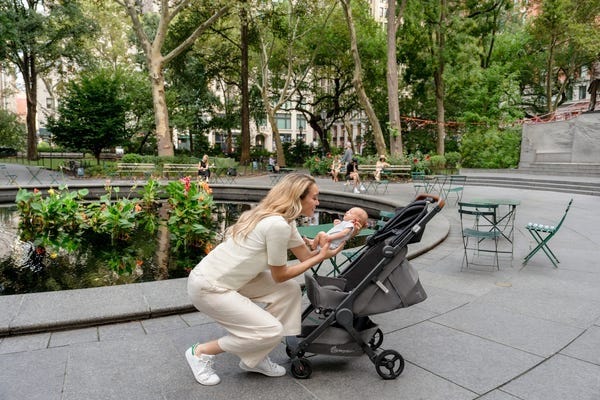

Advantages of Using Strollers for Nature Adventures
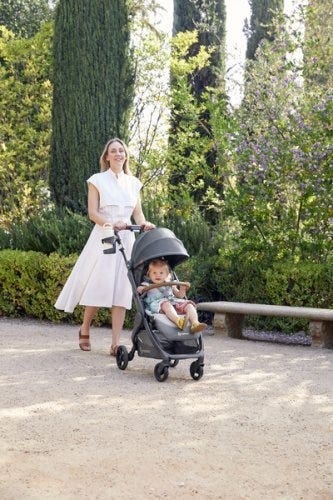

While baby carriers are fantastic for mobility and closeness, depending on the adventure of choice you might want to be a stroller along too.
There are a LOT of baby stroller options on the market. So we understand how confusing it can be to choose the one that’s right for your family. Not only are there a variety of brands, but a variety of strollers that serve different purposes.
There are a few types of strollers on the market:
- Full-sized stroller: This is typically the stroller parents thing of buying for all its versatility.
- Lightweight or umbrella stroller:These compact strollers are perfect for on-the-go adventures.
- Jogging stroller: Designed for parents who want to combine fitness with outdoor adventures.
- Double stroller: Designed for parents with multiple kids, especially twins.
- Car seat carrier: These strollers connect to a specific car seat. We don't typically recommend these as they can be unsafe for baby and uncomfortable for parents who are pushing.
Learn more about the types of strollers and which one would be best for you.
Benefits of Bringing a Stroller
- Storage Space for Gear: Ample room for carrying all your essentials like a diaper bag, beach toys and more.
- Shade and Weather Protection: Built-in canopies to shield your baby from the sun when they are lounging.
- Options: If you have more than one kid, you can stroll with one and carry the other. Or, if you’re getting warm or your little one is getting fussy, you can switch up their position from stroller to carrier or vice versa.
Safety Tips for Strollers
- Ensure your stroller is in good working condition. Make sure buckles are still buckling and that there are no rips or holes that could compromise your baby’s safety.
- Use sunshades or bug nets to protect your little one’s skin.
- Securing the baby properly: always buckle up your baby for safety even if you think they are old enough to go without the buckle.
Combining Baby Carriers and Strollers
For the ultimate flexibility, consider using both a baby carrier and a stroller on your outings.
Combining both options allows you to adapt to different situations. Use the carrier for more rugged trails and switch to the stroller for smoother paths or when your baby needs a nap.
Transition Tips
- Smooth Transitions: Plan stops where you can easily switch from carrier to stroller.
- Pack Light: Only bring essentials to make transitions easier.
Tips for a Successful Adventure
Planning Ahead
- Route Planning: Choose baby-friendly trails and parks. Check local mom groups or outdoor groups and get recommendations for the best outings for kids.
- Check Weather Conditions: Avoid extreme heat or unpredictable weather. Even with our most breathable carriers, when it’s hot, it’s hot. And having two bodies against each other in the heat will be naturally hot and sticky already.
- Packing Checklist: Include diapers, snacks, water, sunscreen, and a first-aid kit. These all-position carriers have storage pockets where you can fit some of the items easily!
- Stay Hydrated and Nourished: Pack healthy snacks to keep energy levels up and bring plenty of water for both you and baby.
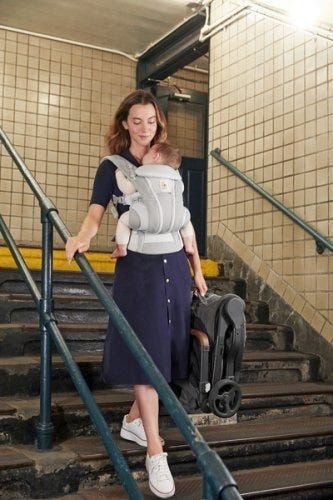

Summer adventures with your baby are a wonderful way to create lasting memories and enjoy the beauty of nature together. From baby carriers to strollers, Ergobaby products are designed to provide comfort and ease for both you and your little one. So, gear up, get outside, and explore the world with your baby by your side.
Ready to embark on your own summer adventures? Check out Ergobaby’s range of baby carriers and strollers to find the perfect match for your family’s needs. Visit our website today and start planning your next outdoor excursion!





